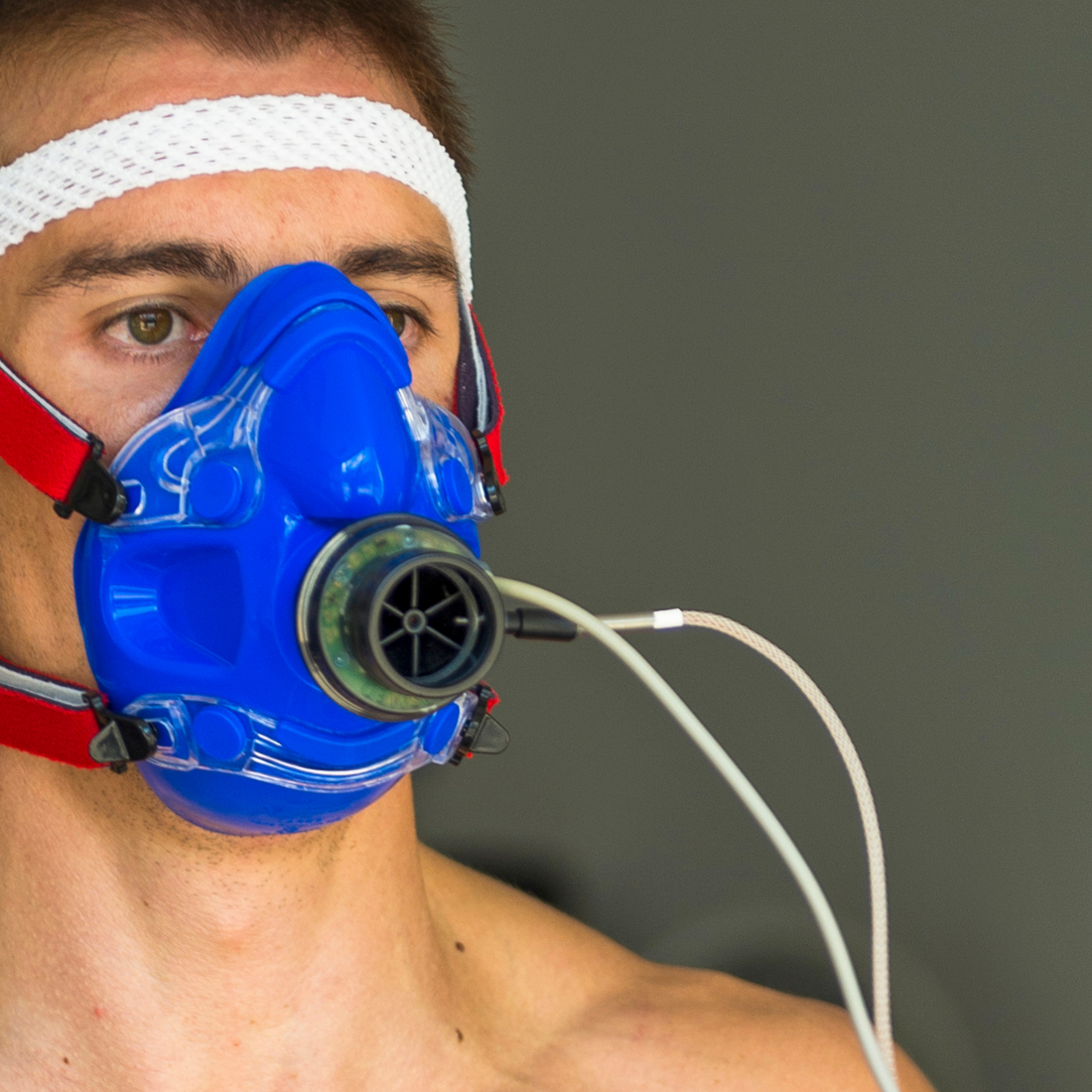We hear a lot about our heart, brain and joints as we age – but what about our lungs?
Let’s look at one measure of lung health - it's one that most of us have heard of.
VO2 Max is a measurement commonly associated with endurance athletes. Essentially, it’s a measure of your “engine capacity” which is critical for high-performing athletes, but it’s also super-important for those suffering from chronic respiratory disease.
What VO2 Max tells you is how quickly you can take oxygen from the air into your lungs, bloodstream and muscles. From there, the oxygen is used to create energy for movement.
VO2 Max is a rate – how much oxygen per unit of time can you use per kilogram of body weight.
Factors which influence your VO2 Max include:
- Lung capacity - the more oxygen your lungs can take in, the better your VO2 score.
- Heart volume - the more oxygenated blood your heart can pump, the better your VO2 score.
- Capillary delivery - the more oxygenated blood your circulatory system can transport to your muscles, the better your VO2 score.
- Muscle efficiency - the more your muscles can extract and use oxygen from your blood, the better your VO2 score.
What happens to your lungs and VO2 Max during the aging process?
VO2max declines at about 10% per decade after the age of 25 (read more here).
The graphs below show how dramatic this drop is, even for those with VO2 max in the top 5% of the population.
VO2 Max changes with age for women (graph 1) and men (graph 2). Note these data represent people free of known cardiovascular disease.


Why does VO2 Max decrease with age?
Age-related decline in VO2 Max results from multiple contributing factors (read more here):
- Decreased maximum heart rate and stroke volume (the volume of blood pumped from the ventricle per beat);
- Reductions in blood volume due to pooling from less effective muscle pump action of the valves in the extremities (as your heart pumps blood, four valves open and close to make sure blood flows in the correct direction - these become less effective as we age);
- Stiffening of the heart muscle fibres;
- Thickening and stiffening of the arterial walls;
- Reduced oxygen extraction (from peripheral regions) and higher A-V O2difference (the difference in the oxygen content of the blood between the arterial blood and the venous blood);
- Age-related muscle loss (sarcopenia).
Why does it matter that our VO2 Max decreases with age?
I don’t plan on running a marathon anytime soon, so why should I be worried about my VO2 Max when its decline is an inevitable part of aging?
Well, a poor VO2 Max is associated with increased risk of cardiovascular disease and all-cause mortality. People who have lower cardiorespiratory fitness also have higher risk of developing certain cancers, including lung, breast and gastrointestinal cancers.
However, it’s more than the statistics of mortality – it is about quality of life and maintaining independence for as long as possible.
What happens in VO2 Max levels for those with chronic respiratory disease, like COPD?
Diseases like COPD cause a decrease in lung capacity and therefore a decrease in VO2 Max – the decline happens faster in people with COPD than in healthy people. The good news is, just like in an athlete, VO2 Max can be improved in someone with chronic respiratory disease.
Darcy has been part of a study done by the University of Otago where they have been analysing the impact of high intensity interval training (HIIT) on VO2 Max in people with COPD.
During the course of the study, Darcy increased his VO2 Max from 15 to a score in the mid-forties. Others in the study had similar results and the data are being published in a peer reviewed journal soon.
What has this meant for Darcy?
Well it has meant he can get on his beloved bike again “hi ho silver” and the freedom that that brings.
Darcy describes this as feeling like he has been “given a second chance.”
His lungs are still stiff and he has to work hard at keeping his VO2 Max levels up, but now he says he can ride that bike “like he stole it.”
The challenges for people with respiratory diseases, like COPD, is that poor lung capacity and poor VO2 Max makes exercise harder – as Darcy says, “it can feel like you’re breathing through a straw.”
This has a domino effect in that a sedentary lifestyle will make lung capacity and muscle quality deteriorate faster – which can lead to movement difficulties and frighteningly for many, a loss of independence.
Key steps to increase your VO2 Max
Even if a silver bike is not your thing, increasing your VO2 Max, no matter your age or state of health, will support a better quality of life as you age.
Recommendations for increasing VO2 Max are to:
- Aim for at least 150 minutes of moderate aerobic exercise per week. High-Intensity Interval Training (HIIT) - incorporating short bursts of high-intensity exercise followed by rest periods can be particularly effective for improving VO2 Max, even in older adults.
- Engage in strength training for muscle health (remember the role of muscles in oxygen uptake for movement). Strength training can be resistance training and exercises that mimic daily activities, like carrying things or activities like housework or gardening.
- Breathing exercises and activities like yoga and pilates can improve the efficiency of oxygen uptake.
- A healthy diet can support immunity, lung, heart and muscle health. Good metabolic health and good weight management also reduces joint stress, making exercise easier.
Sooo, all the best increasing your VO2 Max … High Ho Silver!
All the best, Anna and Darcy.
If you would like to discuss any of this further, please contact Darcy or Anna (who you can contact at +64 27 599 2255 or +64 27 4861418 respectively) or via info@zesttwellness.com.

